nonGeographicDataset
Type of resources
Available actions
Topics
Keywords
Contact for the resource
Provided by
Years
Formats
Representation types
Update frequencies
Scale
-
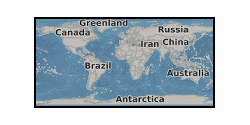
Controlled CO2 release experiments and studies of natural CO2 seeps have been undertaken at sites across the globe for CCS applications. The scientific motivation, experimental design, baseline assessment and CO2 detection and monitoring equipment deployed vary significantly between these study sites, addressing questions including impacts on benthic communities, testing of novel monitoring technologies, quantifying seep formation/style and determining CO2 flux rates. A review and synthesis of these sites studied for CCS will provide valuable information to: i. Enable the design of effective monitoring and survey strategies ii. Identify realistic site-specific environmental and ecosystem impact scenarios iii. Rationalise regulatory definitions with what is scientifically likely or achievable iv. Guide novel future scientific studies at natural or artificial release sites. Two global databases were constructed in Spring 2013, informed by a wide literature review and, where appropriate, contact with the research project leader. i. Artificial CO2 release sites ii. Natural CO2 seeps studied for CCS purposes The location and select information from each of these datasets are intended to be displayed as separate GoogleMap files which can be embedded in the QICS or UKCCSRC web server. These databases are not expected to be complete. Information should be added as more publications or become available or more case studies emerge or are set up. To facilitate this process, a contact email should be included beneath the map to allow viewers to recommend new or overlooked study sites for the dataset. Grant number: UKCCSRC-C1-31. These data are currently restricted.
-
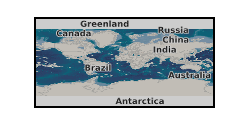
Measurement and monitoring of CO2 flows across the entire CCS chain are essential to ensure accurate accounting of captured CO2 and help prevent leaking during transportation to and from storage sites. This particular R&D need has been identified as one of the highest priority areas in the latest APGTF Strategy Report and in the UKCCSRC RAPID Handbook as well as in a recent study by NEL. The need for addressing measurement uncertainty and its importance for CO2 flows is a key factor in the CCS chain. The accurate measurement of CO2 is also vital to lift the strict regulations from legislative bodies off the full deployment of CCS and create a more positive public perception towards CCS. In addition, it is imperative to investigate the flow metering aspects of CO2 to inform the legislators and regulators and to have this underpinning knowledge available to the providers of the design, build and operation of CCS plants. In this project a cutting-edge technology for the measurement of CO2 flows in CCS pipelines will be developed. The technology will incorporate multi-modal sensing and statistical data fusion techniques. General-purpose flow sensors, including Averaging Differential Pressure, ultrasonic and Coriolis together with temperature, pressure and electrical impedance transducers, will be utilised to create a prototype multi-modal sensing system. A statistical data fusion method based on Bayes' rule for combining prior and observation information will be developed to integrate the outputs of the sensors and transducers. Various statistical data fusion models will be developed off-line and optimal data fusion models will be selected for on-line implementation. Meanwhile, a dedicated CO2 mass flow reference platform will be built using precision weighing techniques and its uncertainty will be established. Extensive experimental work will be conducted on the CO2 mass reference platform after implementing the on-line statistical data fusion models. The multi-modal sensing system will then be extensively tested under controlled flow conditions which resemble practical CCS conditions. The measurement uncertainty for each selected data fusion model will be reported together with the implication of costs, which will be a very informative source for users, manufacturers and researchers. Finally, the multimodal sensing system will be scaled up with the support of the industrial partner and evaluated on their large line (>DN250) flow test facility under simulated flow conditions. Effects of impurities in the CO2 flow on the performance of the flow measurement system will also be studied. Findings from the project will be disseminated to the UKCCSRC and a wider community. Grant number: UKCCSRC-C2-218.
-
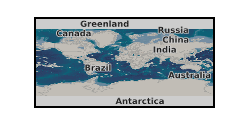
This project contributes significantly to the de-risking of a technology which has a significantly lower efficiency penalty than post-combustion capture using Monoethanolamine (MEA) scrubbing. The work here specifically targets two industrial sectors where MEA scrubbing is at a significant disadvantage (only ~ 30 % of the low-grade heat required for MEA scrubbing is present in a cement plant, for example [1]), and in both cases the spent CaO is valuable as an input to the process itself (either as the main feedstock for cement clinker production, or as a flux in iron production). The project builds on several current projects at both Imperial College and Cranfield University and offers excellent value for money because of these synergies. Grant number: UKCCSRC-C2-209.
-
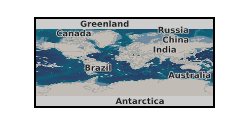
Direct geological observations made during field work, tied to positional information collected by hand-held GPS.
-
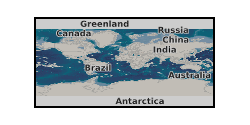
In this project we developed a new geobarometer for mafic and ultramafic igneous rocks, which can be used by the scientific community for a wide range of mineralogical and petrological studies. The material here include the description of the geobarometer, guidelines for its use, software and chemical data acquired for some case studies.
-
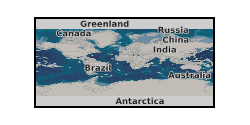
Major, trace element and REE analyses of muds and mudstones from selected intervals from all of the holes. Location of the drill holes are given in the Exp. 352 cruise report (Reagan et al)
-

Electron backscatter diffraction data for cumulates from the Skaergaard Intrusion of East Greenland. 12 samples from the Skaergaard Intrusion: 9 from the Layered Series, and 3 from the trough layering. Layered Series samples have a prefix LS; Trough layer samples have a prefix TB.
-
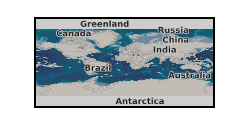
Clay minerals (smectites) were synthesised experimentally to determine isotope fractionation factors (Li and Mg). The data are provided here. Interpretation is ongoing.
-
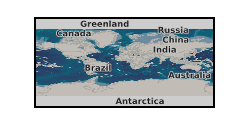
Published paper from grant NE/I010734/1, Modeling the melting of multicomponent systems: the case of MgSiO3 perovskite under lower mantle conditions by Cono Di Paola and John P. Brodholt doi: 10.1038%2Fsrep29830 Two published papers from NERC grant NE/I010947/; Thomson et al AmMin 2014 Experimental Determination of Melting in the systems Enstatite-Magnesite and Magnesite-Calcite from 15 to 80 GPa http://dx.doi.org/10.2138/am.2014.4735 Lord et al EPSL 2014 The Melting Curve of Ni to 1 Mbar http://dx.doi.org/10.1016/j.epsl.2014.09.046 Grant Abstract: Melting in the Earth has a huge effect on its chemical and physical state. For instance, the chemistry of the crust, the mantle and the atmosphere are largely controlled by melting and crystalisation at mid-ocean ridges, hotspots or island arcs. There has, therefore, been an enormous effort in the last decades to understand these shallow melting processes. Yet much deeper melts may have been equally influential in the evolution of the Earth. For instance, it is generally accepted that a deep magma ocean perhaps extending to the Earth's centre, existed early its history. This was the result of multiple impacts as the Earth accreted. From this magma ocean, iron melts separated from silicate melts to form the core, volatiles degassed to form an early atmosphere, and a proto-crust may have formed. It is also accepted that the Earth was hit by a Mars-sized body to create the moon; this too would have caused enormous amounts of melting in the deep Earth. Moreover, there is some evidence for melting in the deep Earth now. It is possible, therefore, that melts in the deepest Earth have existed throughout Earth's history. However, many basic data on the physical and chemical properties of deep melting do not exist. For instance, we don't know the melting curves for mantle minerals and rocks at the pressure and temperatures of the deep Earth. We don't know which minerals crystalise from these melts first (the liquidus phases). We don't know the composition of partial melts of deep mantle rocks or rocks which have been subducted. We don't know the relative densities of the rocks and their melts, and so we do not even know whether minerals float of sink in these deep melts. This lack of data has led to much speculation on the effect of deep melts on the Earth's evolution. For instance, it has been suggested that geophysical and geochemical anomalies in the Earth's mantle have deep early melts as their origin. But these models depend of the chemical and physical properties of the melts and crystalline solids, properties that are simply not known. This project will use novel experiments in conjunction with ab initio modelling obtain these data. The data will provide the chemical and physical foundation on which all future models of the Earths early crystallization and subsequent evolution will be based.
-

This dataset contains VASP runs performed on several supercomputing services (Monsoon and ARCHER, and their successors Monsoon2 and ARCHER2) to calculate the chemical potentials of potassium in liquid iron mixtures and in liquid and solid silicate mixtures, and their distribution in the Earth’s core using density functional theory. Data are available for the chemical potentials of potassium and various other elements in iron and silicate liquid mixtures. These data were used to calculate chemical equilibrium between liquid iron alloys and Earth’s mantle materials. The present grant also supported work regarding the Si composition and thermal history of Earth’s liquid core. Results from VASP runs are also included in the uploaded dataset.
 NERC Data Catalogue Service
NERC Data Catalogue Service